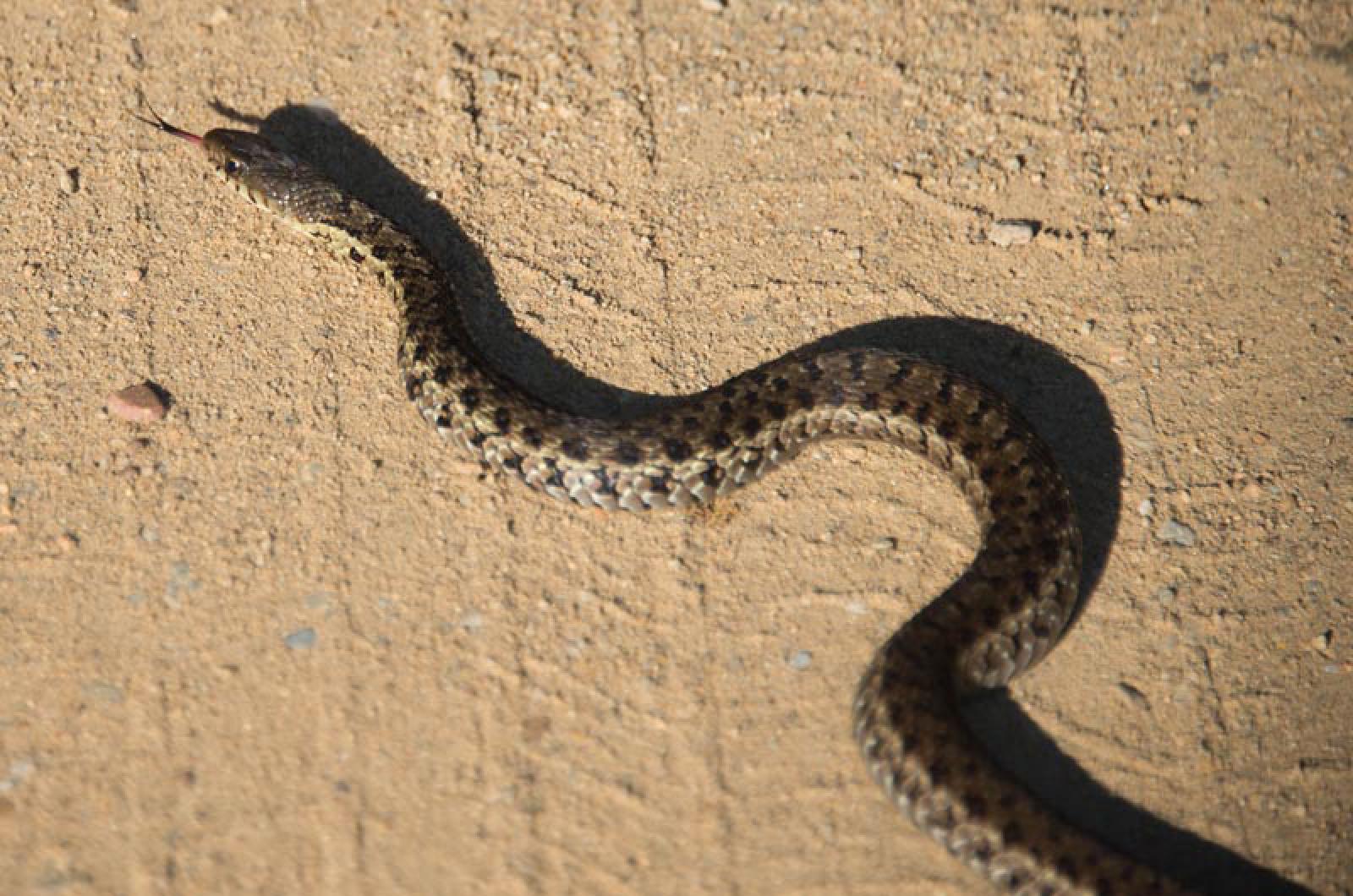Why did the snake cross the road? To get to the sunnyside.
Snakes must have a sixth sense, weather sense, since they somehow knew that the season was changing. The last days of warm temperatures brought snakes out for a final foray, soaking up the rays before the cold forces them into their winter mode. Their presence provided fodder for a few shared tales (and tails) about this animal’s antics with pets, people and in predicaments — dog meets snake, person meets snake, and the like, were reported.
Cold weather means a slow-down for snakes. Snakes are ectotherms (cold-blooded) and cannot produce their own body heat. When coldness comes, they go into a special type of hibernation called brumation to wait out the wintery weather.
Brumation is different than hibernation. Mammals, which can regulate their own body temperature, pile on fat to sustain them for the off-season during their hibernation. They will not usually wake up during their respite.
Reptiles rest, but will be active periodically during the winter when temperatures rise. Though they can store fat, snakes also produce glycogen, a sugar that provides energy for muscle movement. During this resting period, snakes can and do emerge from their hibernacula (winter home) for feeding, drinking and basking. In fact, they must motivate periodically, since snakes need to drink during brumation so as to avoid dehydration.
We can tell that Shakespeare was a good observer of snakes’ plight in obtaining food and water in the winter, as he had one of his characters in Titus Andronicus say: “Alas, poor heart, that is as comfortless/As frozen water to a starved snake.”
No matter their activity or inactivity, snakes both fascinate and concern people. The folks that related their snake stories to me were less interested in the how and whys of their physical activities and more concerned with the psychic aspects of their presence and activities.
With this creature’s historical and mythological significance, the philosophical question, “What does it mean?” often follows a sighting of a snake. That could be a loaded question or an inconsequential inquiry, since a snake’s presence could mean nothing or everything and it can be bad, good or indifferent.
Snakes as symbols are as old as humanity itself. The serpent plays an important role in the fall of humanity — think Eve and temptation. Snakes can be good or bad omens and can be protectors or predators.
Fertility and a good harvest aligned with the sloughing of a snake’s skin, as did rebirth, transformation, immortality and healing. Snakes were symbolic as both poisons and medicines and a physician’s staff was often shown with a coiled snake. Sexual desire and passion were also associated with the sleek and powerful snake, and they were presented as guardians of sacred spaces, perhaps due to their habit of fighting instead of retreating when faced with danger.
The power of snakes in legend and in the flesh will always cause a reaction — will they bring revulsion, luck or are they a bad omen? While this naturalist can certainly shed light on the science of the species, the spirituality, emotion and mythology are likely to be better answered by a psychiatrist, historian or sorcerer.
Suzan Bellincampi is director of the Felix Neck Wildlife Sanctuary in Edgartown, and author of Martha’s Vineyard: A Field Guide to Island Nature and The Nature of Martha’s Vineyard.




Comments (1)
Comments
Comment policy »